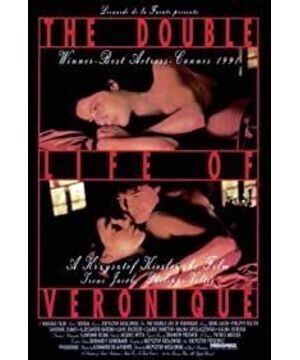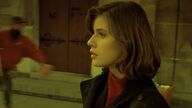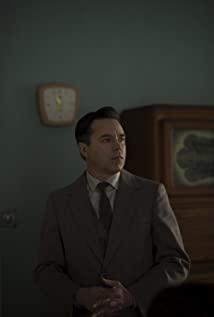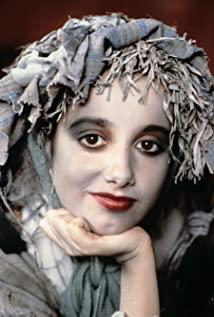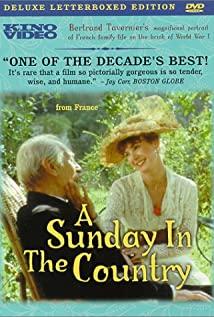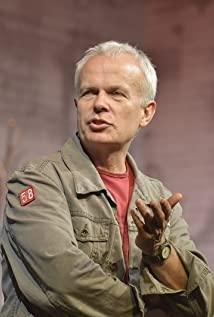The structure of the play
"Two Flowers" is a film directed by the famous Polish film master Kieslowski and released in 1991. The whole film is roughly divided into 64 scenes, telling two relatively independent stories and creating two mirror images of each other. A girl - Polish Veronica and French Veronica. The two independent stories form an intertext, which is intended to achieve the theme that the director wants to express. In the first third of the film, the story of Veronica in Poland is told, and in the last two-thirds, the story of Veronica in France is told. The whole film is composed of small plots, and there is no particularly strong dramatic conflict and narrative main line. Veronica from Poland is a girl with a sweet singing voice and is full of passion for art. While waiting for her friends in the rehearsal hall, she was accidentally discovered by the conductor and began to prepare to perform on stage. However, during the first performance, Poland's Veronica used all her life to sing, suffered a heart attack and died on the spot. The next movie tells the story of Veronica in France. Veronica in France is a music teacher. When watching a puppet show, she was attracted by the male puppet manipulation and became curious. During the following period, she kept receiving mysterious packages, and finally, according to the clues of the package, she met the man, who turned out to be the puppet performer Fabry. In the process of meeting him, the French Veronica is guided step by step, and finally discovers the existence of the Polish Veronica.
The entire film is 1 hour and 33 minutes long (excluding the end credits), at the 14th minute, the Polish Veronica meets the French Veronica on the square in Krakow, which is their only encounter; At 20 hours, Veronica, France discovered a photo of Veronica, Poland, and realized the existence of another self in the world. The first 1-24 scenes of the film have achieved the purpose of laying out the environment and establishing the characters, and a large number of life details and plots of the characters have been confirmed in the second story.
The film begins and ends with the contact between man and nature. At the beginning of the film, the little girl is watching the leaves; at the end of the film, Veronica of France returns to her father's house and strokes the tree lines with her hands. This formed the echo of the beginning and the end, reached the theme of the invocation again, and the audience's movie-watching memory was also activated. At the beginning of the film, two little girls are shown watching the world under the narration of their mother when they were young: the first is Veronica, Poland, looking upside down at the vast starry sky outside; the second is Veronica, France, She was holding a magnifying glass and looking curiously at the little fluff on the back of the leaves. Just like the vast universe outside, there is also an endless world inside each small individual. The macro universe and the micro universe form a complement of personality. Looking at the world upside down is just like looking at the back of leaves, which is an unusual point of view, which also paved the way for later stories about their transcendent perception abilities.
2. Character settings and details
This film has created two very similar girls named Veronica. The two protagonists form a mirror relationship in terms of appearance, family background, preferences and perception ability. When I was a child, I looked at the macro world and the micro world from the perspective of life and death, loving rain and enjoying the sun. These two heroines are similar to the yin and yang character settings, which can explain the existence of the other half of me in the world. The author's choice of women as the carrier of the theme is also related to women's more sensitive sense of things, and more intuition and premonition. In addition, in addition to Veronica, the absolute heroine, the author writes more about a fairy tale writer and a puppet show performer-Fabry. His role is to help the heroine gradually discover herself. It also helps the audience to reveal the theme.
(1) Character settings
This film shows the character and emotions of the characters through many detailed actions of the characters. Characters are tangible and emotional, and human actions have certain needs, and actions are characters. Actions are further divided into tangible external actions and emotional internal actions, in which emotional actions need to be expressed through tangible actions.
Veronica from Poland is a girl who is extremely sensitive to nature. When other chorus girls ran away to avoid the rain on a rainy day, she felt the baptism of the rain head-on and sang in the rain. When she was informed of the female conductor's singing audition notice, she felt the ash falling from the roof as the moisturizing of the rain on her back. She has a good relationship with her father, but it does not reach a deep level of spiritual communication. In the scene at the father's house, when Veronica Poland asks her father "what do I want", the father strokes his daughter's face with his hand and replies, "I don't know, maybe a lot of things." The contrast between an intimate external action and the ineffectiveness of the dialogue shows that the father does not really understand his daughter and achieve spiritual communication with her. The film describes a daughter and a father who have both intimacy and spiritual estrangement. Such a character relationship setting further reflects the theme of the film: the closeness of blood cannot solve human loneliness.
Veronica of France is also extremely sensitive to nature, she will stand under the sunlight sprinkled by the gap between the two houses, looking up to enjoy. In addition, the French Veronica also has a sharper observation than ordinary people. When other teachers and students were watching the puppet show, Veronica could see the puppet performer with the glass on the side of the stage. Through the glass and the mist, her astonished eyes felt his difference. generally. French Veronica has a good relationship with her father, but her father cannot really help her spiritually. Veronica of France also maintains a characteristic curiosity about the occult, which in part shapes her supernatural intuition. After receiving the guidance of the mysterious package and light, not only did she not feel afraid, but she was attracted by the mystery and tried to decipher it.
The man who manipulates the puppet, Fabry, is a very special character setting. In the movie, his image is more like a god-like creator. In the production, performance and fairy tale writing of the puppet show, he is the one who creates the stories and characters, and the puppet show stories in the film form an intertextuality with the story content of the film itself, resulting in the structure of "play within a play". Therefore, his creation is inseparable from the fate of the protagonist in the film. In addition, the man is closely related to the development of the second French Veronica story. Veronica's entire behavioral motivation is basically completed by Fabry's "seduction", and Veronica's series of actions are guided by him behind his back, even if Veronica encounters being "fooled" After the loss and sadness, she still has the ability to continue to approach him, and finally indirectly leads to the fact that Veronica of France sees another picture of herself. It can be said that the development of the entire second story was triggered by this "creator", who made Veronica of France confirm the existence of another self, and then developed the theme of the film.
In addition, this film also includes many clearly-identified characters, who only appear for a few seconds in the film, such as the old man scavenging and the woman in black. The woman in black wearing a hat was seen by Poland's Veronica, her eyes panicked, which was more of a sign of death. In the station in Paris, France, Veronica of France also saw this woman, but the color of the clothes was not black. Although it was no longer a sign of death, her presence clearly strengthened the two Veroni card link. The old scavenger also appears in Ji Shi's works. Like the woman in black, it is a dispersion of death and pessimism. From another point of view, staring at the old scavenger can also create the unique caring of the heroine. By presenting these characters in just a few strokes, the film's theme extends from duet to multiplayer.
(2) Character details
In order to express the theme of life duo, this film has a lot of details embedded in the two stories. From the trivial things in life, family relationships, actions to the unique transcendence of the characters, we can see the script's efforts in this regard.
First of all, let’s look at the details of the external action. Both Polish Veronica and French Veronica use the same lipstick, have the same crystal ball, and wear red gloves... They both like to use rings to press their eyelashes, and they like to tangle with their fingers. Rope, they all have a dark red scar on their fingers. The second is the family composition of the characters. It is obvious that both girls have lost their mothers, have a good relationship with their fathers, and their occupations are related to music. In the end, it was their superpowers of spiritual perception, Poland Veronica said to her father "I don't think I'm alone", and when she died, French Veronica said to her father: "I feel very lonely recently. ”, the father replied: “Someone has disappeared from your life.” In addition, when they saw the old scavenger walking downstairs, they would pay attention and want to step up to help. It can be seen that the spirit of love and compassion is also shared by them. of.
3. Themes
"Two Lives of Flowers" expresses people's desire for the existence and search of another self in the vast universe through the relatively independent but spiritually connected lives of two girls. In Krakow Square, the political background in the distance is the revolutionary demonstrations in Eastern Europe. In the case of agitated and panicked people, Veronica of Poland can glimpse Veronica of France from the chaotic crowd. As the bus turned around, the two finally saw each other at a certain moment. The Polish Veronica kept her eyes on the French Veronica, and the French Veronica inadvertently photographed Poland with the camera in her hand. Veronica. This classic plot core shows the theme of the film's spiritual level, and also expresses the theme of the film itself.
At this moment, the other half of the two lives meet each other, but they are just passing by each other, just as two straight lines finally intersect and then stagger forever. In the movie, we see the Polish Veronica's point of view briefly staying on the French Veronica, but the moment captured by the French Veronica with photography, but the soul is forever frozen, the life Loneliness and companionship are confirmed at this moment. At this level, the film uses its most essential method to express the different ways of "seeing" and "being seen" by the two girls. Film is the carrier of meaning and the tomb of the soul. If there is no camera, everything is just intuition and memory, like an illusion; but with the existence of photography, the girl's intuition is captured, and she stumbles upon it a year later. Her confusion was released, but her eternal regret was also witnessed. She knew that she had lost another self, and Veronica of France burst into tears after seeing the photo.
To sum up, this episode expresses that human loneliness is eternal through "seeing" and "being seen", memory and images, and encountering "self" cannot really solve spiritual loneliness. Just like the lines of Veronica in France touching the tree at the end of the movie, the movie has witnessed the eternal loneliness of people, and we should learn to accept it.
View more about The Double Life of Véronique reviews


